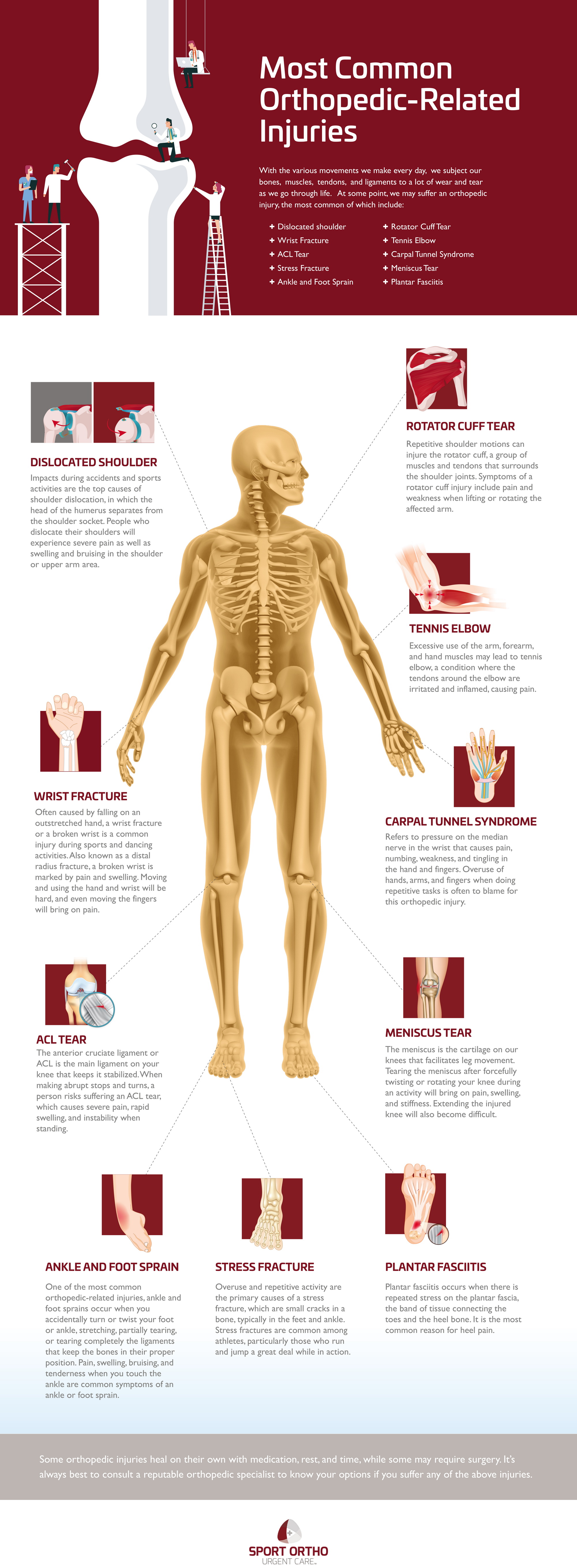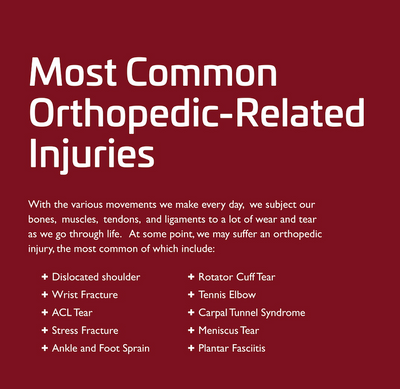 30th Apr 2021
30th Apr 2021
Tips To Prevent Common Orthopedic Injuries
It doesn’t matter if you’re a gifted athlete who trains regularly or an office worker who spends his entire life hunched in front of a desk day in and day out. Everyone is vulnerable to an orthopedic injury, which could strike at any time.
Many orthopedic injuries occur because of an accident, and we can’t do much about them but get the orthopedic urgent care they need. Far too many otherwise incredibly fit professional athletes have already seen their careers end after a particularly hard tackle or fall on the field or court.
Nevertheless, while accidents certainly happen, we can try to prevent most orthopedic injuries and succeed.
Here are some tips that can help you prevent common orthopedic injuries.
Get Regular Exercise
Regular exercise provides many health benefits, preventing orthopedic injuries included.
As you regularly perform strength training and endurance exercises, your muscles and joints become stronger and tougher, allowing you to handle the effects of high-impact activities better. Stronger muscles give additional protection for your bones, which regular exercise can also make denser.
Regular exercising can also improve your balance and coordination, which can help reduce the risk of falls that could result in orthopedic injuries.
Perform Stretching Exercises
Stretching is a vital component of working out, as it helps improve your body’s flexibility and aids the flow of blood to your muscles.
With better blood flow to the muscles, their nutrient-absorption ability improves as well. Discarding lactic acid and other waste products also becomes easier.
On top of helping you become more flexible, stretching exercises can also provide other benefits such as increasing your range of motion, improving your posture, and calming your mind.
With all its benefits, it’s best to make stretching a habit, even when you’re not about to go on your workout routine. In fact, if you’re working an office job, getting up from your chair and stretching from time to time can help keep back pain at bay, among other things.
Eat Right
Your diet plays a crucial role in improving your body’s ability to handle the physical stress that comes with increased physical activity.
For healthy bones, you need calcium, which you can find in dairy products such as milk, yogurt, and cheese, as well as in dried peas and beans, green leafy vegetables, and fish with bones you can eat like sardines.
When you don’t get enough calcium, your body will take some of it from your bones as the mineral is essential to muscle contraction. When this happens, your bones will weaken and make you more prone to orthopedic injuries.
It would also be great if you consume healthy amounts of dietary fats that help with nutrient absorption and hormone production, both of which play a critical role in protecting your muscles and joints from injury.
Wear The Right Shoes
Whenever you stand, walk, jog, or run for certain stretches, you put a certain amount of strain on your legs’ structural makeup. Over time, the effects of that strain will accumulate and lead to various musculoskeletal issues.
However, wearing footwear appropriate for the activity you’re engaging in should be able to help reduce the strain on your feet and legs.
There’s a veritable treasure trove of shoes designed to cushion your joints and bones, from the most comfortable running footwear to basketball shoes that effectively absorb the impact of landing onto the court. Invest in appropriate footwear and help your joints and bones withstand your activities better.
Go Swimming
Jogging is a high-impact exercise. So is playing basketball and most other team sports.
If you want a workout that doesn’t put too much of a strain on your joints and bones, go swimming instead!
Swimming is a low-impact activity that gives you an excellent cardiovascular workout without detrimental effects on your orthopedic health.
When you go swimming, you get the opportunity to increase not just your flexibility but your range of motion as well, both of which reduce your risk of orthopedic injury.
While the tips above do not 100% guarantee that you’ll be injury-free for the rest of your life, they can at least better your chances of avoiding common orthopedic injuries like the ones featured in the infographic below.

About the author
Dr. Charles R. Kaelin received his medical degree from the University of Louisville, Kentucky, and completed his orthopaedic training at Orlando Regional Center in Orlando, Florida. Dr. Kaelin also received training in Sports Medicine at Alabama Sports Medicine with Dr. Lemak, specializing in sports medicine and workman's compensation injuries. He has been a fellow of the American Academy of Orthopaedic Surgeons (AAOS) since 1990. He is a charter member of the International Cartilage Research Society, Founding member of the AAOS Education Enhancement Fund (AAOS) and past editorial board member for the American College of Sports Medicine Health and Fitness Journal.





